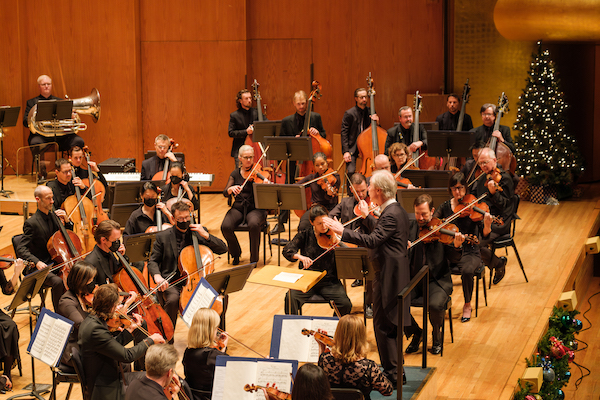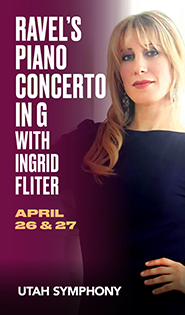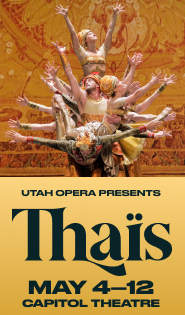Robertson’s rapport grows in Utah Symphony’s enjoyable program

“Can I just say, we adore playing for you,” David Robertson said as he took the Abravanel Hall podium Friday night. That much was evident in the Utah Symphony’s vibrant performance, the second of three this season with Robertson as creative partner.
Last month, Robertson offered an inventive juxtaposition of Act III of Berg’s Wozzeck and Beethoven’s Symphony No. 9; he’ll be back in the spring with an eclectic evening featuring his guitar collective Another Night on Earth. This weekend’s program, though not as outside-the-box as those, proved a thoughtfully crafted lineup of works celebrating place.
First up was the early Sibelius tone poem En saga. The composer reportedly was emphatic that there is no program to this music, but of course it’s about Finland. Robertson approached it with plenty of atmosphere and mystery, swelling at times in rousing crescendos, but achieving the most thrilling effect when guiding the orchestra to a barely audible but crystal-clear whisper. Brant Bayless’s increasingly insistent viola solos helped ratchet up the tension. The counterpoint of bows in contrary motion through several sections of the work added a fascinating visual dimension.
Ives’s Three Places in New England followed. The first movement depicts Augustus St. Gaudens’s memorial to the first black regiment in the Civil War, and Robertson read it as a somber nocturne. A minor-third ostinato in the basses provided the steady backdrop of marching feet against the generally subdued orchestral reflections.
“Putnam’s Camp,” the piece’s most celebrated movement, was a thrill ride, highlighted by the raucous re-enactment of two bands playing in different keys simultaneously. (Robertson had the two factions stand for bows separately at the work’s conclusion—a nice touch.) The finale, a scene set on the banks of the Housatonic River, reverted to the reflective mood of the first movement, minus the sense of impending doom. Horns, violas and Lissa Stoltz’s expressive English horn played a distant hymn against the full orchestra’s depiction of a surging river.
The evening ended with the glorious Romantic sweep of Schumann’s Symphony No. 3 (Rhenish). Robertson conducted with obvious enjoyment and with large, demonstrative gestures. A strong performance by the horn section enlivened the soaring opening movement. The third movement offered a serene interlude, which the orchestra executed with satisfying delicacy. The brass shone again in the solemn depiction of the majestic cathedral of Cologne before the happy major key returned for the triumphant finale—warm, energetic, and buoyant enough to pull listeners out of their seats.
Robertson is clearly at home in this hall and with this orchestra.
He seemed to make a point of helping the audience feel at home as well, acknowledging between-movements applause nonjudgmentally and asking, “Is everybody OK?”, after objects clattered to the floor during one movement break.
The program will be repeated 7:30 p.m. Saturday. utahsymphony.org

